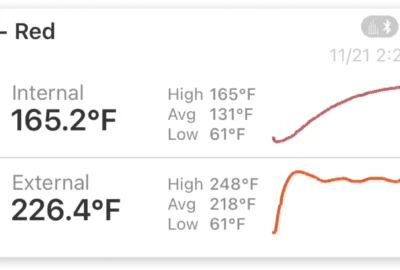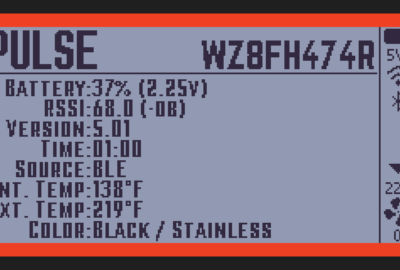Science, Tech
The Science of Thermocouples
As our company name suggests, FireBoard Labs is a company focused on learning, researching, and developing technology. In some cases, we’ve had to learn the fundamentals of certain principles just to understand how to develop something new.
Below is a short story of what we’ve learned about thermocouples, an interesting type of temperature sensor.
As a recap, many of you know we released FireBoard 2 last year – this was the next evolution of our original FireBoard thermometer launched in 2016. We wanted to incorporate thermocouples into the FireBoard 2 from the beginning, but we needed a bit more time to finish learning how they work. We finally released the FireBoard 2 Pro, which uses thermocouples, in January of this year.
So whats the big deal about thermocouples? Are they really better?
To recap, there are three common types of temperature sensors in use:
- RTDs (aka PRTs) – these could actually be argued to be the “best” however they are potentially fragile and slow to react. But accuracy and temperature range on the high-end RTDs are top notch.
- Thermistors – these are the de-facto standard for inexpensive temp sensors. While they are inexpensive, they can actually still be quite accurate within a given range for their specification.
- Thermocouples – striking a good balance between cost, accuracy and durability, thermocouples provide a good experience all around (more below)
 As a quick side story, check out this read about the Mars Perseverance Rover. While most electrical generation relies on turning a generator (steam, gas, coal, wind, etc) there is an interesting scientific principle discovered by Thomas Seebeck – now named the Seebeck Effect. Seebeck found that two dissimilar metals (usually some type of alloys) welded together would create a voltage at the other end of the wires. The Seebeck Effect is how a thermocouple works.
As a quick side story, check out this read about the Mars Perseverance Rover. While most electrical generation relies on turning a generator (steam, gas, coal, wind, etc) there is an interesting scientific principle discovered by Thomas Seebeck – now named the Seebeck Effect. Seebeck found that two dissimilar metals (usually some type of alloys) welded together would create a voltage at the other end of the wires. The Seebeck Effect is how a thermocouple works.
The Seebeck Effect is explained more here, but simply put, the voltage created is directly proportional to the temperature at the junction of the two metals. So to “sense” the temperature we just need to sample the voltage generated and lookup the corresponding temperature. Of course there are more complexities (i.e., cold junction compensation) but we’ll leave those details out for this blog post!
To skip back to the original question – what is so much better about thermocouples – let us highlight these advantages:
- quick response time
- robust / heavy duty – the physical weld is hard to break
- wide temperature range – very cold to very hot
- industry standard – the “Type K” connectors are universal and also very heavy duty, well suited for industrial use
We had a little fun testing our FireBoard Pro in a high temp use case with our Ooni Pizza Oven. Check out our video here to see thermocouples in action!
As always, for questions about our technology, please contact us at info@fireboard.com
Ted Conrad
FireBoard Labs Founder










Leave a reply